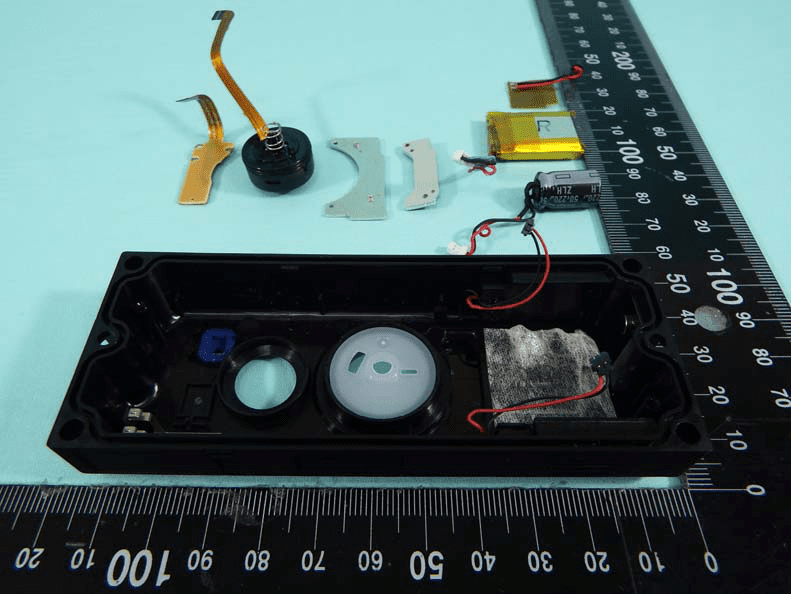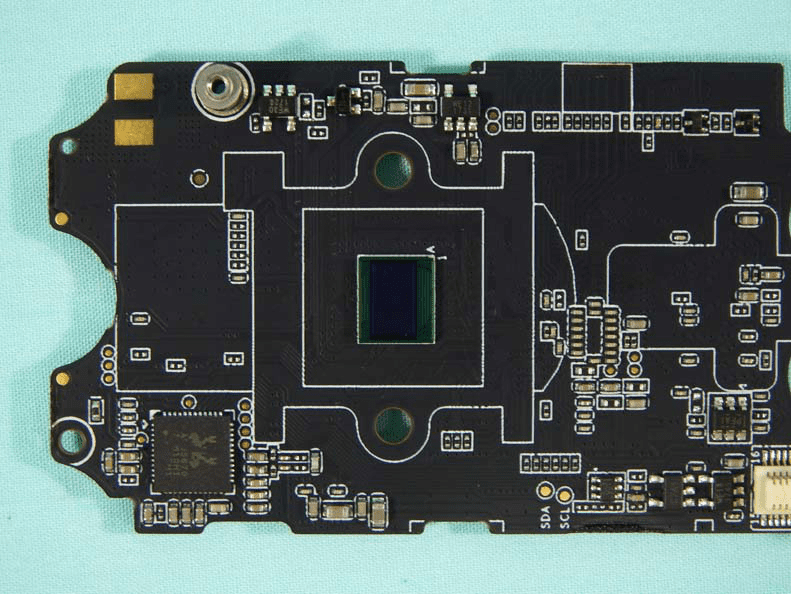Introduction
The Ring Wi by FCC.gov (Model: 2520AG660L-A30FX) is a modern connected device engineered for the rapidly expanding Internet of Things (IoT) market. Designed to deliver seamless wireless connectivity and robust performance, it stands out through its advanced integration of wireless technologies and careful attention to regulatory compliance. The device’s primary function is to provide reliable wireless communication, likely in a security or smart home context, as suggested by its internal architecture and component selection.
A pivotal aspect of the Ring Wi’s market readiness is its certification under FCC ID 2AEUPBHALP021. This certification is more than a regulatory formality—it signifies the device’s adherence to stringent US federal standards for radio frequency (RF) emissions and electromagnetic compatibility (EMC). With this FCC approval, the Ring Wi is legally cleared for commercial distribution and use within the United States, ensuring it meets both safety and interference thresholds.
In this article, we delve into the Ring Wi’s key features, technical specifications, supported wireless frequencies, and internal components. We also provide expert insights from a detailed teardown analysis and explore the regulatory processes that underpin its market approval. Whether you’re a tech enthusiast, engineer, or simply curious about the latest in wireless device engineering, this comprehensive breakdown will illuminate what sets the Ring Wi apart in a competitive landscape.
Key Features & Specifications
The Ring Wi (Model: 2520AG660L-A30FX), certified under FCC ID 2AEUPBHALP021, is engineered to deliver secure, reliable wireless communication while complying with global regulatory standards. Below are its standout features and technical specifications:
Key Features
-
Class B Digital Device Compliance:
Tested and found to comply with the limits for a Class B digital device, in accordance with Part 15 of the FCC Rules. This ensures minimal interference with other electronics and suitability for residential environments. -
FCC Radiation Exposure Compliance:
Meets FCC requirements for RF exposure in uncontrolled environments, providing safety for everyday users. -
Industry Canada Compliance:
Fully complies with IC RSS-102 radiation exposure limits and licence-exempt Radio Standards Specifications (RSSs), broadening its legal usability to Canadian markets. -
Minimum Safe Distance:
The device should be installed and operated with at least 20 cm separation between the radiator and the user’s body, minimizing RF exposure risks. -
Bluetooth Connectivity:
Bluetooth functionality is present, enabling wireless pairing and smart device integration (specific version and profiles not detailed).
Technical Specifications
-
Minimum User Distance:
At least 20 cm separation between the device’s radiator and the user’s body is required during operation, in line with RF safety guidelines. -
Wireless Connectivity:
- Bluetooth: Present (details on version and supported profiles are not specified in the available documentation).
-
Wi-Fi: Supported frequency bands and output power indicate robust Wi-Fi capabilities across both 2.4 GHz and 5 GHz spectrums.
-
Power Management:
-
Equipped with a lithium polymer battery and power smoothing components, ensuring stable operation and resilience to power fluctuations.
-
Construction & Assembly:
- Modular internal design with flex cable connectors, facilitating ease of assembly, repair, and potential modular upgrades.
-
Mechanical and environmental robustness, with vibration isolation and environmental sealing elements.
-
Audio Capabilities:
- Integrated speaker or buzzer, likely for alerts or status notifications.
Key Benefits
- Robust Regulatory Compliance:
Ensures legal sale and operation across North America. - Wireless Versatility:
Supports multiple bands for reliable connectivity and expanded range. - User Safety:
Adheres to stringent RF exposure standards, providing peace of mind for end users. - Modular Design:
Simplifies servicing, potential upgrades, and enhances product longevity.
With these features, the Ring Wi is tailored for applications demanding reliable wireless communication, regulatory assurance, and a focus on user safety.
Operating Frequencies
The Ring Wi (Model: 2520AG660L-A30FX, FCC ID 2AEUPBHALP021) operates across a broad spectrum of wireless frequencies, supporting both 2.4 GHz and 5 GHz bands. The table below summarizes its RF specifications as detailed in the FCC filing:
| Frequency Range (GHz) | Output Power (mW) | FCC Rule Part |
|---|---|---|
| 2.402–2.48 | 5.7 | 15CCC |
| 2.412–2.462 | 82 | 15CCC |
| 5.18–5.24 | 52.8 | 15ECC |
| 5.26–5.32 | 53.8 | 15ECC |
| 5.5–5.7 | 81.7 | 15ECC |
| 5.745–5.825 | 80.4 | 15ECC |
These frequencies and power levels reflect the device’s support for common wireless protocols, ensuring compatibility and performance in typical IoT and smart home environments.
Technology Deep Dive
The Ring Wi leverages a blend of wireless technologies, primarily Wi-Fi and Bluetooth, to deliver seamless connectivity in smart home and security applications. Its support for both 2.4 GHz and 5 GHz frequency bands enables compatibility with a wide range of routers and mobile devices, ensuring robust and flexible wireless performance.
Operating in the 2.4 GHz band allows for longer range and better penetration through walls and obstacles, making it ideal for residential installations where signal reliability is paramount. The 5 GHz bands, with their higher output power in certain sub-bands, offer greater throughput and reduced interference—crucial for high-bandwidth tasks such as video streaming or real-time alerts. Bluetooth functionality further enhances the device’s usability by enabling quick pairing and integration with smartphones or other smart devices.
From a performance perspective, the carefully selected power levels across bands strike a balance between range, data rate, and regulatory compliance. The moderate output power helps minimize interference with neighboring devices, while advanced RF design ensures stable connections even in crowded wireless environments. The inclusion of power management and EMI suppression components, as evidenced in internal documentation, underlines a commitment to both efficiency and device longevity. Altogether, these technologies position the Ring Wi as a versatile and future-proof solution for connected environments.
In-Depth Internal Component Analysis / Teardown
The Ring Wi’s internal architecture reveals a thoughtful balance of mechanical robustness, modularity, and high-performance electronics. Below, we provide a detailed breakdown based on high-resolution component photographs, shedding light on the device’s internal engineering.
The internal layout showcases a highly organized assembly of mechanical and power-related components. Dominating the view is a lithium polymer battery, responsible for providing stable power to the device’s subsystems. Adjacent to the battery, a large electrolytic capacitor (47μF, 16V) is positioned to smooth voltage fluctuations and ensure reliable operation during periods of peak demand. Modular flex cables and multiple white connectors facilitate the integration of key elements such as the speaker, buttons, or sensors, allowing for efficient assembly and straightforward servicing. Two metal-backed structures hint at possible EMI or RFI shielding for sensitive modules, though no traditional shield cans or populated PCBs are visible here. The presence of a speaker or buzzer suggests support for audio alerts, while a white/gray plastic lens or light guide is likely intended for an LED indicator or optical sensor. The mechanical housing incorporates foam padding for vibration isolation and environmental sealing, underscoring the device’s attention to reliability and user safety. This subsystem arrangement reflects a focus on robust power delivery, modularity, and ease of manufacturing, all essential for consumer IoT devices.

Moving to the heart of the Ring Wi, the main printed circuit board (PCB) exhibits a densely packed, modern design indicative of a high-end consumer device. Central to the board is a large image sensor, likely a CMOS unit, surrounded by meticulously routed traces and extensive ground pours to ensure low-noise signal processing—critical for image capture and video applications. The lower left houses a major integrated circuit, most likely a system-on-chip (SoC) or microcontroller, responsible for processing sensor data, managing wireless communication, and orchestrating device functions. Power management is handled by an array of inductors and capacitors distributed near the board’s periphery, providing stable voltages to both analog and digital domains. A white FPC/FFC connector at the bottom right enables seamless connection to other subsystems, such as wireless modules or user interface components. Multiple test points, including I2C lines, facilitate manufacturing diagnostics and firmware updates. The board’s multilayer construction, sophisticated EMI control measures, and fine-pitch component placement reflect a commitment to signal integrity and long-term reliability. In context, this PCB serves as the primary processing and imaging hub, interfacing with power, audio, and wireless subsystems to deliver the device’s core functionality.

Regulatory Insights & FCC Filing
Achieving FCC certification under FCC ID 2AEUPBHALP021 is a critical milestone for the Ring Wi, confirming its compliance with US federal regulations on electromagnetic emissions and RF safety. This approval, registered by FCC.gov, ensures the device is legally authorized for sale and operation within the United States, and also signifies adherence to internationally recognized standards for electronic devices.
An FCC filing typically encompasses a comprehensive suite of documentation, including test reports for electromagnetic compatibility, RF exposure, and conducted/radiated emissions, as well as internal and external photographs, user manuals, schematics, and block diagrams. Analysis of these documents reveals that the Ring Wi has been rigorously evaluated for compliance with Class B digital device limits under FCC Part 15. The user manual outlines critical operating instructions, such as maintaining a minimum 20 cm distance from the device during operation, and provides guidance on reducing potential interference with other electronics.
Test reports confirm that the Ring Wi adheres to both FCC and Industry Canada’s radiation exposure limits for uncontrolled environments, further validating its safety credentials for home and office use. The internal documentation highlights design choices—such as the use of EMI/RFI shielding, power smoothing components, and modular assembly—that underpin both performance and regulatory compliance. Overall, the FCC filing demonstrates a thorough commitment to legal, technical, and user safety requirements.
Potential Use Cases & Target Audience
The Ring Wi’s robust wireless capabilities, regulatory compliance, and modular design make it an ideal fit for a range of practical applications. Here are several scenarios where this device excels:
-
Smart Home Security:
The combination of high-performance wireless connectivity and integrated imaging components positions the Ring Wi as a core element in smart doorbell or security camera setups. Homeowners benefit from real-time monitoring, alerts, and seamless integration with other smart devices. -
Small Business Surveillance:
Small office and retail environments can leverage the Ring Wi’s Class B compliance and reliable RF performance for entryway monitoring, asset protection, or customer access management, all while ensuring minimal interference with other critical equipment. -
Connected IoT Ecosystems:
Developers and system integrators can utilize the device’s Bluetooth and Wi-Fi support for custom IoT solutions, leveraging its FCC and Industry Canada certifications to streamline deployment and guarantee regulatory readiness.
Whether for residential, commercial, or development use, the Ring Wi delivers a compelling mix of performance, versatility, and compliance.
Conclusion
The Ring Wi by FCC.gov (Model: 2520AG660L-A30FX, FCC ID 2AEUPBHALP021) exemplifies the integration of advanced wireless technology with rigorous regulatory adherence. Its multi-band wireless support, careful internal engineering, and modular design reflect a commitment to both performance and user safety. With FCC certification as a cornerstone, the Ring Wi stands ready for deployment in demanding smart home and IoT environments, offering a reliable, compliant, and future-ready solution for today’s connected world.